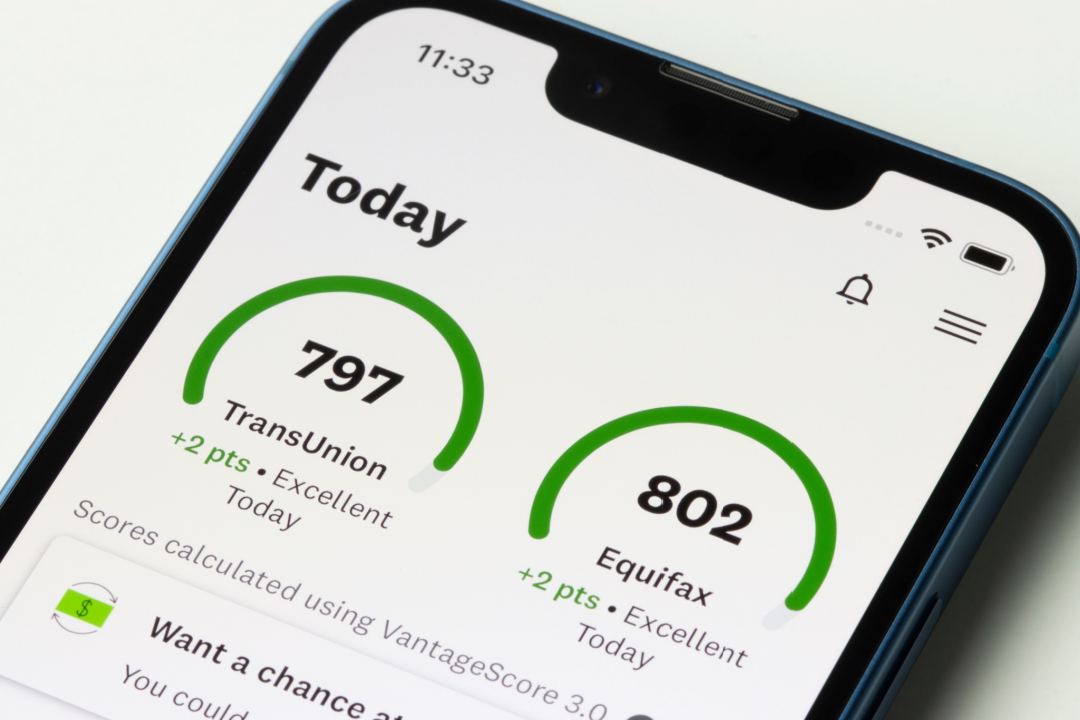Strategies for increasing your credit score can seem counterintuitive at times. In this article, we will walk through some tips and tricks to increase your credit score and also explain the method to the madness.
Why is credit important?
Credit scores are a financial report card detailing how financially responsible you are. Just like earning the trust of a friend before they let you borrow their power tools, lenders and landlords want to understand your financial trustworthiness before lending you money or allowing you to sign a lease. Having a low credit score limits your opportunities and makes what opportunities you do have more expensive.
Experian, Equifax, and TransUnion are the three credit bureaus that produce credit scores (also called your FICO score). Each bureau calculates their FICO score slightly differently and your lender may have a preference, or may want to see scores from all three.
If you have a good credit score, credit history, and a steady income, lenders will be more likely to lend you more money and at a lower interest rate – this is a good thing! If you do not have these things, the lenders will consider you a riskier consumer, and therefore will be less willing to lend you large amounts of money and may require you to pay higher interest rates to be compensated for this perceived risk.
What factors impact your credit?
According to Experian, the following are the main factors impacting your credit score :
Payment History: This is the most important – ~35% of FICO Score
Credit Utilization Ratio: ~30% of FICO Score
Credit History Length: ~15% of FICO Score
Credit Mix: ~10% of FICO Score
New Credit: ~ 10% of your FICO Score. This refers to the number of credit accounts you’ve recently opened as well as the number of hard inquiries lenders make when you apply for credit. For example, when you go to buy a house, the lenders will do a hard credit inquiry and if you do too many of those in a short time span, this could negatively impact your credit score temporarily.
What can you do to increase your credit score?
1. Build your credit history
Your credit history is your track record of responsible spending. The longer your credit history, the higher your credit score will be. Your credit history timeline starts when a credit card or loan is taken out in your name and the lender reports your payment history to the credit bureaus. If you do not make payments on time, this poor record can negatively impact your credit score for around 7 years. One issue is that people build credit mainly from getting a credit card, but many credit card companies will not open credit cards for people with no credit history. One way to avoid this is to add your children as authorized users on your credit card. You do not have to be family to become an authorized user, which means this strategy could work for adults trying to build credit as well, maybe by using a spouse’s credit.
Adding children as authorized users on parental credit cards can be a great way to help a child start to build credit history so that they have an advantage when they want to apply for a credit card of their own. The authorized user’s credit score will be affected by the payment history of the card. If the primary cardholder’s financial situation sours, it could also harm the authorized user’s credit. An authorized user can be added or removed at any time.
Pros:
– Can help build the user’s credit history
– Can help teach financial responsibility and literacy
– User will receive the same benefits as the primary cardholder, such as points and other rewards
Cons:
– Authorized users are not legally liable for the debt on the card, that is the responsibility of the primary cardholder
– They may have access to your entire credit limit
– Their spending could negatively affect your credit score if the credit utilization increases too much
– Primary cardholder’s negative credit could harm the user’s credit
The app “Experian Boost” can help quickly increase your credit score by giving you credit for the utility and cellphone bills you’re already paying. Historically these payments did not help your score because these companies do not report good payment history to the credit bureaus – which Experian Boost will now do for you.
2. Build your credit mix
Good credit history is not just linear, it is also deep. Consistently paying one credit card is good, but consistently paying 2-3 credit cards is even better at showing that you are financially responsible and can manage your debt and spending. Anyone can toss one ball in the air and catch it, but juggling three balls means you’ve practiced and have a skill.
While three balls are great, much more than three may make the perceived likelihood of dropping a ball go up. There is no exact number of credit cards that is the perfect sweet spot, but 2-3 seems to be a safe range.
If you are having a hard time getting approved for a traditional credit card, try opening a card at a store like Target, REI, or Nordstrom. Typically this will allow you to earn more rewards for spending you’re already doing and also help you build credit.
In addition to having a couple of credit cards, it can also be beneficial to have a diverse “credit mix” which refers to the types of credit you have. Car loans, mortgage loans, and credit cards are considered different types of credit. If you can manage a few different types of credit, that could be helpful to increasing your score.
3. Increase your credit limits
When you open a credit card, it typically comes with an assigned “credit limit.” Your credit limit is the amount of money you are allowed to spend on the card before the credit card company cuts you off. If you have good credit history, the credit card company is likely to give you a higher credit limit.
Your credit limit is an important factor in your credit utilization ratio. Your credit utilization ratio can impact up to 30% of your credit score, making it a very influential factor and one that is fairly easy to change. The credit utilization ratio is monthly spending divided by the credit limit (available credit). Credit utilization is calculated on a per card basis, but also on a combined basis.
For example, let’s say I have 3 credit cards, each with a $10,000 credit limit, and I spend $5,000 each month. My combined credit utilization ratio would be ~17% ($5K divided by total $30K available). If I put all $5,000 on one credit card, the individual utilization ratios would be 50%, 0%, 0%. The ideal credit utilization ratio is between 5-10%, with anything over 30% being too high and potentially harmful to your credit score. In this situation, it would likely be better to put $1,667 on each of the three cards to maximize credit depth, but also keep credit utilization ratios as small as possible. A 0% credit utilization is much better than having a high credit utilization ratio, but the best strategy is to keep your utilization around 10% and preferably in the single digits.
The easiest way to decrease your credit utilization ratio without decreasing your spending is simply to increase your credit limits. You may be able to simply call and ask how to increase your credit limit. If you have a good history of paying off your credit cards, the credit companies are typically very happy to increase your limit.
4. Don’t cancel old cards just because
While we just discussed that a 0% utilization ratio is not beneficial to your credit score, cancelling old credit cards can actually be harmful to your credit score. Cancelling a credit card could lower the average age of your accounts, one factor which contributes to your credit score. Additionally, closing those lines of credit reduces your total available credit which will therefore increase your credit utilization ratio. If you have several credit cards with good credit history and you open a new card and don’t like it, then close it. Closing a credit card with a short history will not be as harmful to your average account age, but your utilization ratio, which is a very large factor of your score, could still be negatively impacted.
5. Sign up for auto pay and auto save
Alas, the best way to improve your credit is to simply pay your bills and do it on time. Setting up your credit card with auto-pay from a bank account can be a great way to make sure your bills get paid on time. To do this, you allow the credit company to pull funds from your checking or savings account each month. For charges that you know will be the same each month, you may be able to set up auto pay directly through your bank.
In Summary:
1. Pay your credit card bills in entirety each month to avoid high interest charges.
2. Contact your bank to increase your credit limits.
3. Try to have a few different lines of credit to build your credit mix.
4. Analyze your credit history before cancelling credit cards.



